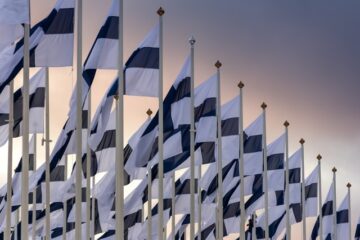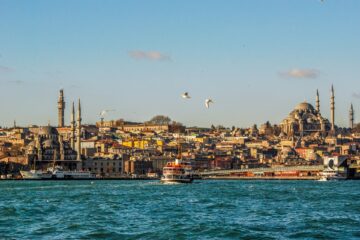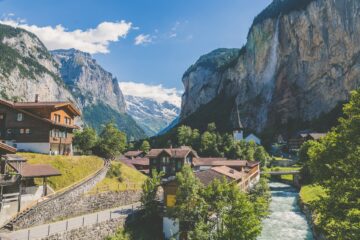Debate among citizens about society’s functioning is a core attribute of the public sphere. Yet with the onset of recent crises across Europe—including health emergencies, economic insecurity, and border porosity—the significance of the public sphere appears to be increasing in some societies while declining in others. More information on how citizens engage with the public sphere is needed to understand its evolving character amid various crises today. There is a cultural element to understanding such involvement, acknowledging that debates among citizens occur within the ‘discursive’ realm of daily conversation as well as through publics engaging in collective action, as they seek to turn everyday public chatter into social change.
In Iceland, a country that experienced a complete banking collapse as part of the 2008 Global Financial Crisis (GFC), the public sphere has taken on new resonance as the space where critique can be mounted by citizens who aspire for a more transparent society. A consensus among Icelanders is that the banking crash was handled poorly by government and, what’s more, away from public view. Analysis of how Icelanders are engaging with the public sphere highlights new modes of political critique and novel engagements with the capital city, Reykjavík, as new spaces emerge across the city following urban construction over the last several years. What’s more, it demonstrates the progressive blurring of the private and public realms, conceived as being distinct in the historical model of European democracy.
Crisis and the Public Sphere
It is well known in the history of European society that the public sphere is a precondition for building a successful democracy and, moreover, an example of liberal democracy in action. But how has it been traditionally understood, and how might this be changing with the onset of crisis? The public sphere is the site of opinion where publics most obviously express everyday democratic principles. Indeed, it is the space where citizens in democratic countries establish their self-interpretation in the face of overarching political and economic mechanisms, through which they can then develop a consensus about society’s functioning.
Over the last decade, however, the public sphere has become one of crisis-talk, where speculation over social equality and democratic fairness are increasingly debated. In the decade after the GFC and the subsequent implementation of economic austerity measures by governments, protests erupted across the cities of Europe. Citizens assembled in large numbers to demonstrate against what many saw as economic and political inequity. This included the global Occupy Movement, Spain’s Indignados, the Yellow Vests in France, and advocates of economic sovereignty assembling in Athens’ Syntagma Square. In Iceland, months of mass demonstrations against the government’s handling of the economic crisis, which were held in front of parliament, culminated in the collapse of the government in 2009.
During 8 months of ethnographic research in Reykjavík between 2016 and 2018, I explored the character of Iceland’s public sphere in the decade after the GFC. I documented the changing urban profile of the capital, which coincided with a major influx in foreign tourism, and worked with civil society organisations engaged in political and economic reform. While Iceland is home to the world’s longest continuing parliamentary democracy (est. 930AD), the state–citizen relationship has dramatically weakened since 2008. In turn, a changing built environment and an increased thirst for political reform have given rise to new forms of public sphere participation that are premised on the Icelandic populace (360,000) agitating for change by mobilising existing personal networks through collective action.
The Evolving Character of Iceland’s Public Sphere
Taken as the arena in which people freely associate, converse and engage in social and political critique, the public sphere operates independently to the state, market and private sphere, where the latter can be scrutinised and acted upon to envision society and politics anew. Significantly, in social and political theory, the public sphere is understood as one where ‘strangers’ in mass societies—rather than connected persons—meet to debate ideas. Between the winter months of October 2008 and January 2009, more than a quarter of the adult population braved the elements to protest against government incompetence. In turn, the public sphere experienced a boost in citizenry support, with protests becoming ‘an exciting location to meet with people and enjoy “magical” moments of affective solidarity.’
While Iceland does not have a strong history of staging public protest, the size of the 2008–2009 gatherings were tantamount to people’s anger with their representatives, and while protests of this size have rarely been seen after the GFC, an investment in the public sphere persists. Through mass gatherings in Iceland and citizens’ demands that democracy ought to work for the people and revolve around public inclusion, Jón Ólafsson highlights that a rise in trust among fellow citizens and a decline in that of politicians eventuated. Indeed, it was during this time that friends, colleagues, and families arrived together and stood side-by-side at protests, whereby a strong sense of unity among suburban Icelanders was built. As sociologist Jón Gunnar Bernburg relays through interviews with protest attendees:
Many mentioned going to protests with friends, spouses, co-workers or parents. “You know, if I went, someone came with me,” 22-year-old…Saga recalled, “and if I wasn’t going to go, someone would drag me along, so there was always a group dynamic.” Revealing her need for interpersonal ties at the protest site, Saga continued: “I wouldn’t have protested all by myself, you always need your safety net, you know.”
Following revelations of government impropriety in 2016, as part of the Panama Papers, and in 2017, as part of an administrative cover-up involving officials, protesters again staged rallies. Observing the 2017 protests as part of my own ethnographic research confirmed the presence of friends, family, colleagues and school and university acquaintances, highlighting personal connections between Icelanders who were again demanding lasting reform.
Engagement with the public sphere among connected Icelanders amid a crisis demonstrates the blurring of the private realm (i.e., the domestic, intimate world) with the public realm (i.e., the political, society-facing world), which are usually conceived as separate. What’s more, if self-interpretation occurs through participation in the public sphere, a self-and-collective-interpretation can be built between known persons, in which individual and collective interpretations of ‘the public’ can be explored within democratic action. There is evidence, then, of a curious shift underway in how democratic participation in the public sphere occurs, and how this is understood in the context of civil society more broadly. A discussion of the historical division between the public and private realms demonstrates this shift and orients discussion toward what may be achieved when these two realms coalesce.
The Division of the ‘Public’ and the ‘Private’ in the European Public Sphere
German sociologist Jürgen Habermas is credited with producing one of the first critical appraisals of the liberal public sphere, noting its emergence with European modernity and mass industrialised society. This domain, according to Habermas, developed alongside the market economy and the liberal democratic regime of the nation-state. It took full effect outside overarching systems of influence and power through critical discussions in European salons, coffeehouses, masonic lodges, and libraries in the 18th century. In this context, the public sphere was one where publics could employ their ‘reason’ to discuss social affairs—a distinctively modern practice—at away from the state, market and domestic realms.
The split between the public and private realms, which the Icelandic case now brings into useful tension, was certainly an aspect of the public sphere in the 18th and more recent centuries. However, this split has a far older development and finds its roots in ancient Greek society. Habermas argues that in Greek antiquity, politics (polis) was separate to the marketplace (agora) and manorial households (oikos), the domain of private life. While the marketplace was the centre of public life, only free citizens could participate, and their reputation as citizens was based upon their ability to productively manage their household. In this context, personal excellence was connected to one’s self-interpretation. The private—public divide was perpetuated through Roman legislation and persisted, as Habermas notes, through the ‘domain of private autonomy’ being ‘stood opposed to the state,’ which was transferred from the household to the ‘public’ arena with the rise of the liberal public sphere. It persisted through engaging in two practices, discussion (lexis) and informed action (praxis).
There is a spatial conception of the state as ‘above’ society and the public sphere as ‘below’ the state, with ‘public’ seen as plainly different to ‘private.’ Following a range of recent crises in Europe, the public sphere has taken on new discursive qualities and re-emerged physically to bring about new spatial relationships between citizens and the built environment. One only need to recall the swathes of people attending occupy rallies between 2011–2013, which were organised around maintaining a public presence across cities Europe and North America. Many such rallies were organised on social media but sought to mobilise the public into cities streets. This means that new forms of demonstrating and mediums of communication continue to increase, with public sphere participation now encompassing both online and offline spaces. And yet, while there is often a focus on the public sphere as a ‘discursive’ space based on communication, its physical infrastructure still ought to be considered.
There is growing attention being given to the blurring of the public and private realms through the way that ‘the political’ now pervades ‘the personal’ and vice versa, in the way that an economic crisis never simply affects the state and the body politic, but disproportionately affects individuals through it bearing on ‘the personal’ realm. In Iceland, this has led to the mobilisation of autobiographical networks at protests, meaning the personal is invoked in the context of the public realm, showing how it is that Iceland is not merely undergoing a shift toward becoming a ‘movement society’ characteristic of larger nation-states, but that personal ties and autobiographical networks are being used as part of this.
The ‘Personal’ and the ‘Political’: An Evolving Relationship in Times of Crisis
Throughout recent history, Icelanders have had some expressions of collective action, notably against NATO membership and in support of the 20th century Women’s Movement, with public concerns spanning both public debate as well as political discussions. Responding to calls for women’s improved rights and interests, the Women’s Movement in Iceland in the 1970s was premised on ameliorating women’s ‘marginal’ position. Reflecting on the motivations of Iceland’s women’s movement, Sigríður Dúna Kristmundsdóttir suggests the movement ‘saw and presented women as socially marginal and politically alienated because they lacked established authority, were outside the authority structure, and they…strove to change the situation by using this alienation to obtain for women rights that would give them access to the domain of authority, an important “inside” of Icelandic society.’
In the context of fighting for gender equity, an issue which persists yet one that distinguishes Iceland as one of the world’s most gender equal countries, the public sphere allows for sections of society to voice concerns over fairness and, crucially, to act upon them. Reconciling the barriers between insider or outsider status within society, of being part of the decision-making core of the body politic as well as a constituent part of the public sphere, is therefore a central concern. This is akin to the private–public divide often invoked when thinking about liberal democracy. While it is not easy to discern this split in the context of everyday life, the uses of the built environment offer some clues. This was observed, for example, while walking past a public square as part of the Institute for Foreign Languages (IFL) at the country’s main university, which was being planned around the time of the economic crisis but did not open for several years.

In the decade following the 2008 economic collapse, numerous construction projects and empty lots were found across Reykjavík, marking the sites where new projects had been commenced but not completed, including the IFL. The IFL was named in honour of Iceland’s first female head of state, Vigdís Finnbogadóttir (1980–96), elected at the height of the Women’s Movement. The public square outside the Institute resembled a sunken amphitheatre with tiered seating where live talks and performances could be given, recalling ancient Greco-Roman public architecture and the history of the European public sphere that the Institute supported through its focus on European language. In the peak of the university summer break, the area was used mostly by skateboarders. Within a month or two, as the days became noticeably shorter and the temperature dropped with the coming of winter, the question arose of which audiences would brave the elements to congregate in this setting. At anti-government protests held in the 2017 autumn, the weather was also a concern, and I joined with fellow protesters braving inclement weather as locals exercised their right to protest and demand greater government transparency in the aftermath of 2008.
In Iceland, activity in public is to some extent dictated by seasonal light and weather, meaning that ‘public’ and ‘private’ life often take place indoors. Therefore, while the public sphere is the site of developing political subjectivity away from the state, market and the domestic sphere, the building of sustained political critique within the Icelandic public sphere has its own cultural and climatic character. Indeed, anthropologist Kirsten Hastrup notes that it is in the home, rather than in ‘public’ contexts, that Icelanders have cultivated both a sense of self (i.e. connection to family, history and heritage) as well as engaging in critical discourse:
At the core of individual life worlds is one’s home, heimili. Homes are areas of domestic pride, and as such they are to some extent “public” domains. Unlike the Mediterranean area, for instance, where public life unfolds outside the homes, in Iceland homes are where people meet and communicate. There [has historically been] no village squares or outdoor bars, where one can expose oneself to the gaze of others and thereby see oneself, even though café life seems to be growing in Reykjavík. There [has] only [ever been] the home in which to display oneself “as another”…
Changes to the urban environment, which have come about as Iceland’s economy has strengthened through investment from tourism, have expanded the kinds of fora within which many Icelanders now participate in the public sphere. While self-interpretation now occurs outside of the home, originally the space dedicated to personal and collective character building, the personal and intimate sides of life in Iceland remain strong within the public sphere through mobilising interpersonal ties as part of collective action since 2008.
Why does this matter?
In times of crisis, the public sphere has been thought about exactly as its name suggests, conjuring up images of anti-austerity protests and populist sentiment. Indeed, it is in this context that political subjectivity is born, citizens’ identities in relation to the state are solidified, and claims-making against elites is mounted. In times of crisis, then, notions of affective and political belonging to the nation form continue to emerge, which go beyond political persuasion and a collective sentiment for change. Rather, there is a further coalescing of the political and personal. Indeed, public sphere participation often invokes elements associated with the private realm, including the affective qualities of vulnerability, hope and empathy. The human story of the public sphere–how it is understood, valued and supported through active participation–continues to expand, and is ripe for ongoing analysis.
With social media companies clamping down on acceptable forms of communication, and the coronavirus pandemic limiting the organisation of public gatherings and protests, the personal and affective aspects of public sphere participation should receive ongoing consideration. This includes the development of bridging and bonding strategies between personal and autobiographical networks in the process of participating in the public sphere, thus blurring the boundary between ‘the political’ and ‘the personal’ in the European context. The Icelandic case not only demonstrates how these two ostensibly separate domains continue to coalesce, but it also shows how this blurring is inflected by culture and context.
Sources:
Bernburg, JG 2016, Economic crisis and mass protest: The pots and pans revolution in Iceland, Routledge, London
Hastrup, K 1998, A place apart: An anthropological study of the Icelandic world, Oxford University Press, Oxford
Heffernan, T 2020, ‘“Where is the new constitution?”: Public protest and community-building in post–economic collapse Iceland,’ Conflict and Society 6(1): 236-254 https://doi.org/10.3167/arcs.2020.060114
Kristmundsdóttir, SD 1989, ‘Outside, muted, and different: Icelandic women’s movements and their notions of authority and cultural separateness,’ in EP Durrenberger and G Pálsson (eds) The anthropology of Iceland, University of Iowa Press, Iowa City, pp. 80-97
Loftsdóttir, K, Smith, AL & Hipfl, B 2016, ‘Introduction,’ in K Loftsdóttir, AL Smith, and B Hipfl (eds) Messy Europe: Crisis, race and nation-state in a postcolonial world, Berghahn Books, Oxford
Ólafsson, J 2019, ‘So strong, yet so weak: The emergence of protest publics in Iceland in the wake of the financial crisis,’ in N Belyaeva, V Albert and DG Zaytsev (eds) Protest publics: Toward a new concept of mass civic action, Springer, Cham, pp. 117–136
Tazreiter, C 2010, ‘Towards decent society: The demands of justice and the demands of civility,’ Thesis Eleven 101(1): 97-105 https://doi.org/10.1177/0725513609360617
Vigdís n.d., ‘Vigdís Finnbogadóttir Institute of Foreign Languages’ (artist’s impression), https://vigdis.is/en/about/svf-english/, viewed 13 October 2021.


